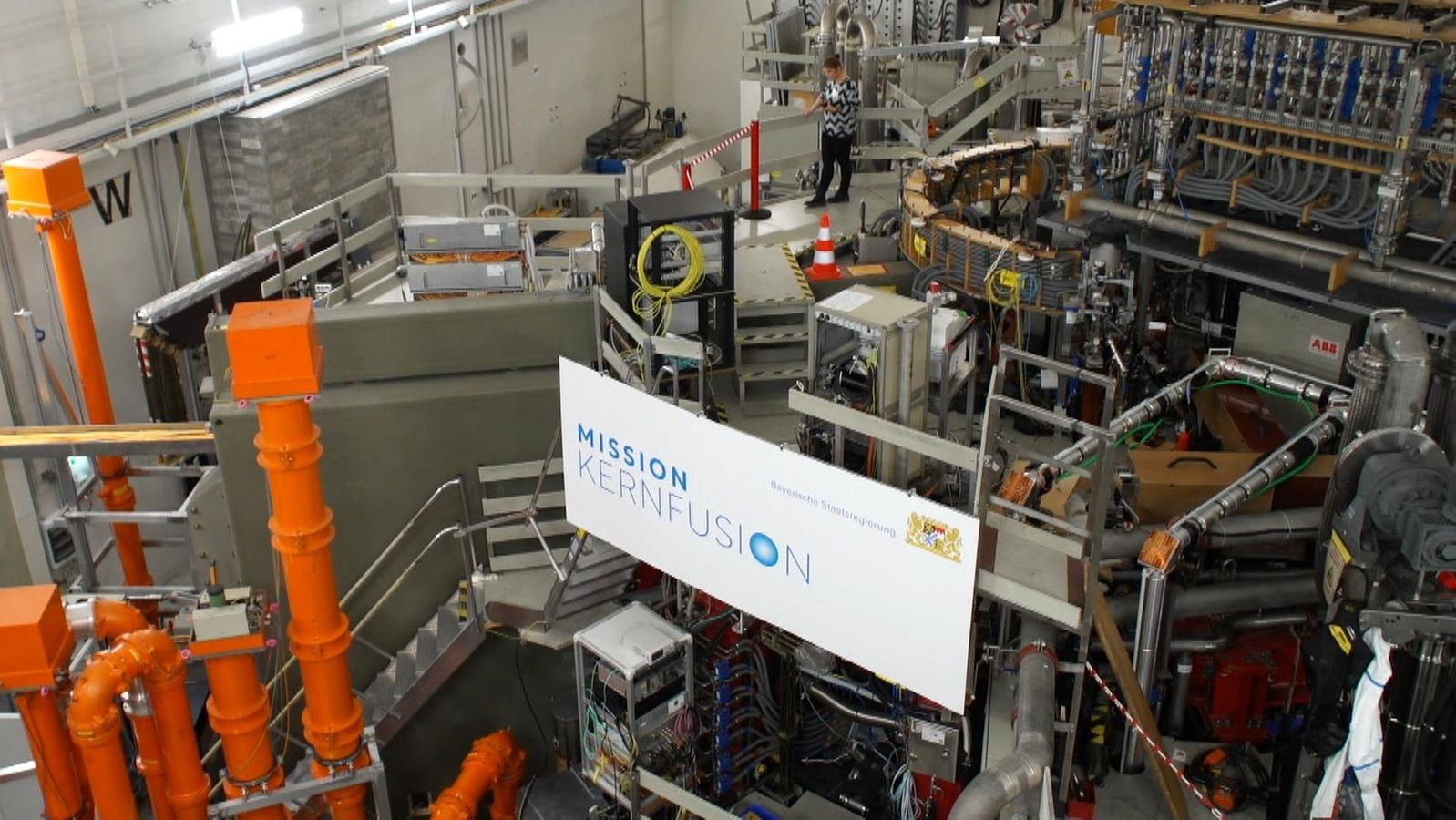The dream of an inexhaustible, carbon dioxide-free energy source has excited science – and politics – for many years. It is believed that nuclear fusion could solve many of our energy problems. Researchers on Earth want to mimic what happens in stellar nuclear fusion processes like those inside the Sun.
During nuclear fusion, atomic nuclei do not split, but rather fuse under great pressure and at extremely high temperatures. This fusion releases energy, a process that occurs constantly in the Sun and other stars.
Bavaria is one of about 30 locations worldwide that have been researching nuclear fusion as a way to provide energy for decades. The hope and goal of scientific experiments is that nuclear fusion power plants will one day provide us with electricity.
Solving basic questions in fusion research
In addition to laser-based nuclear fusion, which Munich startup Marvel Fusion is investigating, magnet-based nuclear fusion is being investigated. The Max Planck Institute (MPI) for Plasma Physics in Garching near Munich is researching this process. Through the so-called “ASDEX upgrade,” MPI researchers say they want to investigate “fundamental questions in fusion research” under conditions similar to power plants. The plasma generated by atomic nuclei is supposed to be heated to the point that the nuclei fuse. “Garching is about the technological and physical underpinnings of a future fusion power plant,” explains Elizabeth Wolfrum, MPI Professor of Plasma Physics.
According to Wolfrum, the Garshing experiment is very small and needs a large facility. It’s called ITER – short for the English term International Thermonuclear Experimental Reactor – and has been under construction in Cadarache, southern France, since 2007. No completion date has been set.
Bavaria wants to provide 100 million euros
Prime Minister Markus Söder and Science Minister Markus Blum (both CSU) presented a “Bavarian master plan for promoting nuclear fusion and new types of nuclear technologies” in Garching ten days before the state elections. Söder wants to provide €100 million for fusion research by 2028. Söder also announced the construction of a pilot power plant within about ten years. Bavaria wants to take a leading position in nuclear fusion research.
Experts have so far viewed Germany as a bystander
Management consulting firm Strategy& sees conditions ripe for Germany to play a leading role in merger research. Christian von Tschirschke, an energy expert at Strategy&, said in an interview with the German news agency dpa in mid-September that fusion energy could achieve a decisive breakthrough in the next 10 to 15 years: “But Germany is just watching.” “With astonishment or doubt.” The expert is particularly critical of Germany’s meager government funding compared to the United States.
Nuclear fusion – an inexhaustible source of energy?
What is certain is that nuclear fusion basically works. However, practical implementation has proven difficult and expensive for decades. This process still consumes a lot of energy, and the fusion reaction lasts too short to provide usable energy. The researchers at Garshing are focusing, among other things, on discovering how to operate their fusion machine at the maximum possible profit and without requiring extensive maintenance.
In contrast to renewable energies such as wind and sun, a nuclear fusion power plant will also operate in quiet conditions or at night. But it remains to be seen if and when nuclear fusion will be part of our energy supply. It remains a dream as an inexhaustible source of energy.
With materials from Franziska Könitzer, Katharinapfadenhauer, and the German Press Agency.

“Total coffee aficionado. Travel buff. Music ninja. Bacon nerd. Beeraholic.”








More Stories
Coral Seeding: Artificial Insemination Makes Coral More Heat Tolerant
Fear, Anger, and Denial: How People Respond to Climate Change – Research
LKH Graz: Using radiation to combat heart arrhythmias